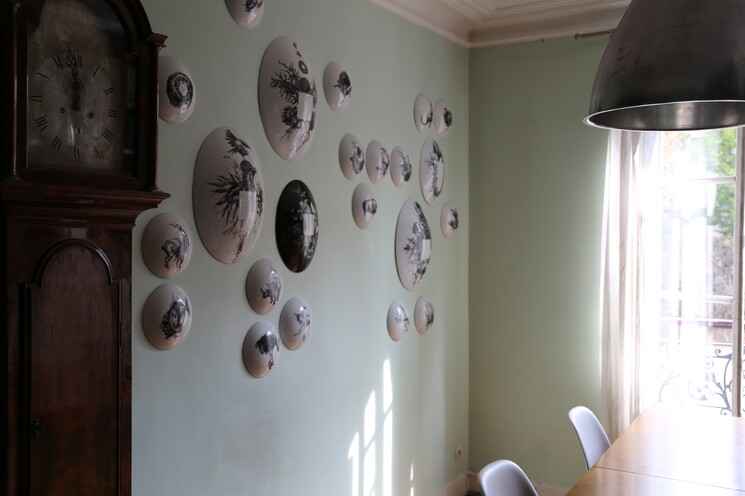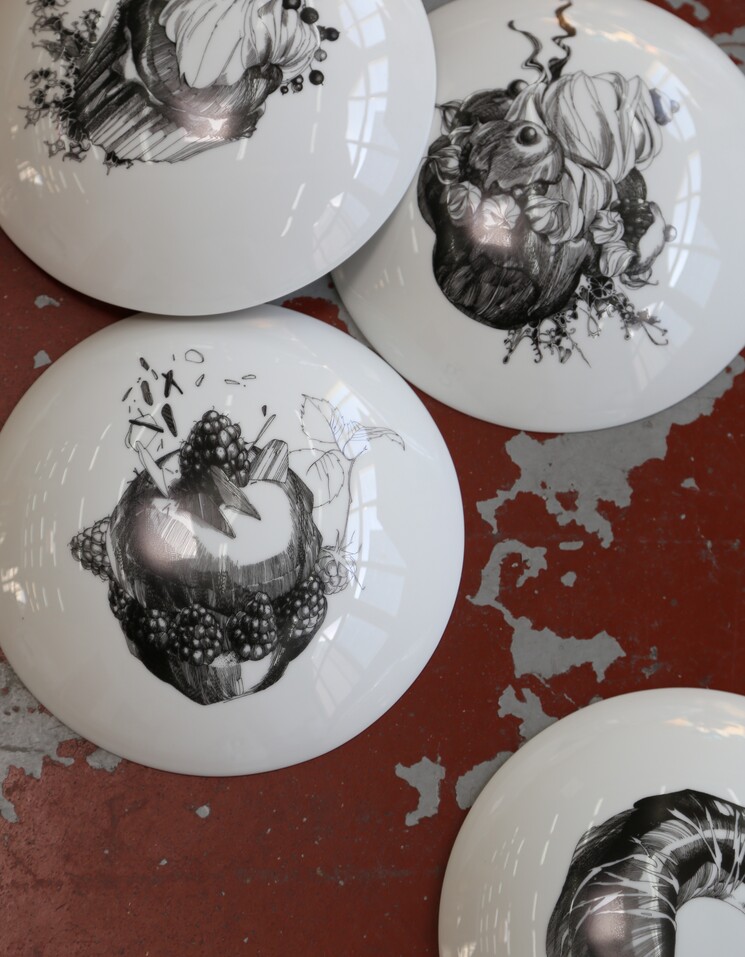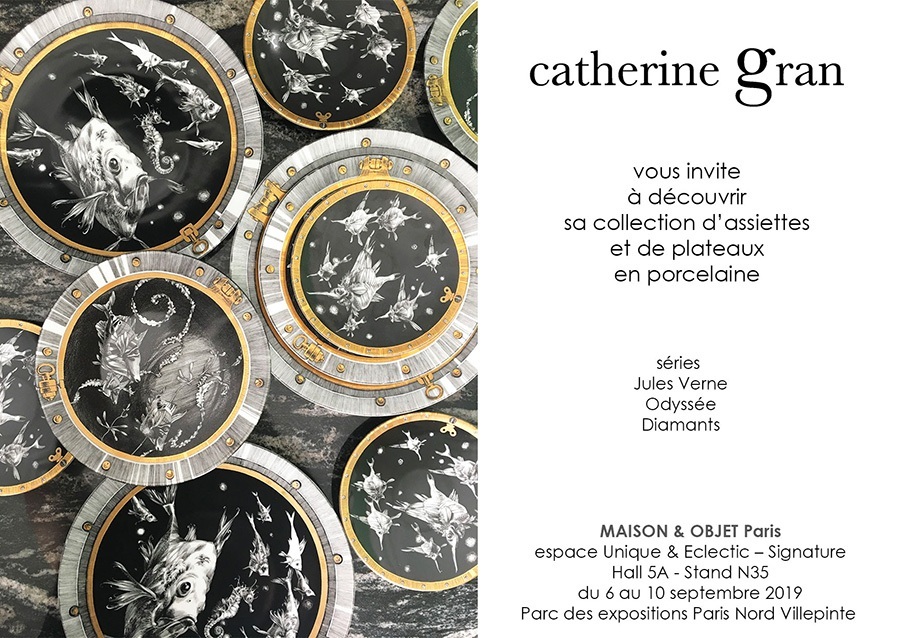A new project by Catherine Gran is always an important event. Can you tell us more about ‘convexity’? What were you trying to achieve?
I wanted to reinvent the wall, you know, this flat, matt surface...
If you take a piece of porcelain and extend it as much as current techniques allow, you obtain a shining and vibrating surface on which a black and white drawing will acquire an incredible energy. Hang it up on a wall, and that wall will talk, quite literally. And if you have twenty or more such pieces, you can create a rhythm, a movement, an ambiance that would structure any space, making it unique.
Why did you choose heraldry and bestiary as your themes?
Heraldry is so beautiful and full of the spirit of chivalry! It enables me to focus on minute details, highlight trivial objects and juxtapose incongruous subjects. Each coat of arms is structured like a miniature cathedral. The blank section in the middle serves as a space on which the imagination can run free.
As for the bestiary, it is my own personal zoo, liberated from the rigid boundaries of the coat of arms. The pageant is rounded off by a series of pastries.
Your drawing is extremely precise. How do you ensure there is no loss of precision in the manufacturing process?
I had to work with craftsmen of exceptional skill. The extremely fine line of the images that had to be reproduced without any loss of detail, combined with the high quality and whiteness of the porcelain were two key technical constraints. The manufacturers I chose are internationally recognized for the quality and the precision of their work.
The Leipold Group (Germany), who have vast experience of producing luxury porcelain (for Hermès, among others), achieved incredible results in terms of picture editing, lithography and printing. They conducted a series of tests related to the porcelain baking process, which enabled them to determine the exact temperature required, to within one degree, in order to preserve the resolution and contrast of the original drawings.
The Maison Arquié (Entreprise du Patrimoine Vivant) custom made each porcelain piece. They are among the last surviving manufacturers to keep alive the French Limoges Porcelain tradition, successfully associating the latest production techniques with a centuries-old savoir-faire. Each piece requires many hours’ work: first it is hand crafted, then undergoes a preliminary baking, before the image can be applied. Owing to the specific shape and size of my porcelain pieces, this very delicate moment needs to be supervised by several specialists.






